What happens when you submerge a raw egg in vinegar for days? Check out how you can make a naked egg with your kids in this bouncy egg science experiment.

We know as adults that magic is fake. Don’t get me wrong, magic tricks are impressive, but they are 100% fake. For kids, you don’t need to know magic to blow their minds. All you need is REAL science!
In this experiment, we are going to take an egg and make the eggshell disappear. Moreover, the naked egg is now going to be rubbery and bouncy!
Do this experiment. Trust me, your kids will be amazed when you drop the naked egg and make it bounce.
How to Make a Bouncy Egg
Supplies:
- Raw egg
- Glass jar
- White vinegar
- Free bouncy egg experiment worksheets
Directions:
1. Place the raw egg carefully in the jar. If it cracks, you need to take it out and try again.
2. Fill the jar with white vinegar until the entire egg is submerged in the vinegar.
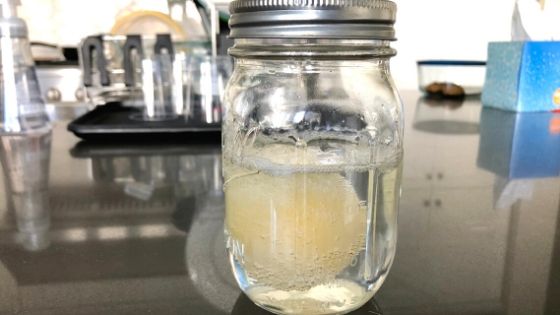
3. Leave the egg in the vinegar for another 2 days.
4. Gently take out the egg and rinse it with water.
5. Bounce the egg by holding it 1-2 inches above a surface and letting it go. Tip: You will want to do this on a plate in case the egg breaks.
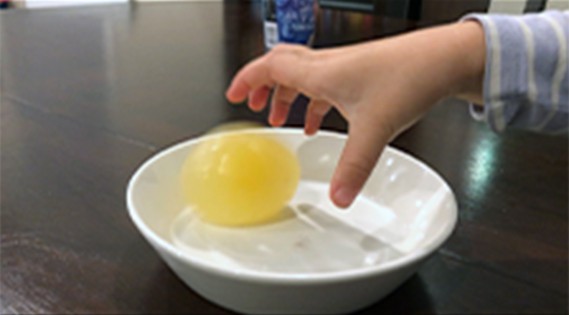
6. When your kids are done bouncing the naked egg, drop it from a higher distance and watch the egg explode!
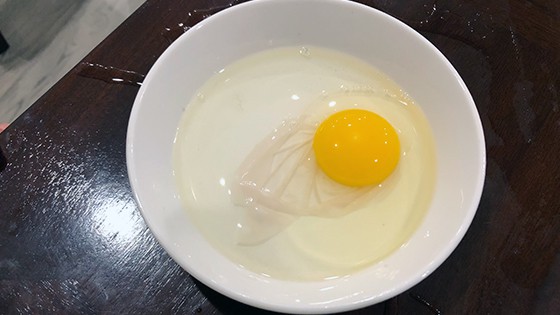
My kids loved this bouncy egg experiment because it is amazing how the eggshell became this thin membrane that held the inside of the egg together. It was also interesting to touch the yolk after the egg popped. Next time we will need to cut into it and see what the inside looks like.
Make sure to wash your hands with soap and water after playing with the bouncy egg. Raw eggs contain salmonella bacteria that can make you and your kids really sick!
The bouncy egg experiment is a great way to introduce your kids to science words like hypothesis, observation, and conclusion. Check out the Free Bouncy Egg Worksheets for printable materials list and directions as well as worksheets to help your kids get the most out of this experiment!
Bouncy Egg Variation:
Want to take this neat science experiment a step further? Add food coloring to the vinegar and make colorful bouncy eggs!
We added some blue food coloring in the vinegar and the resulting naked egg was so pretty!
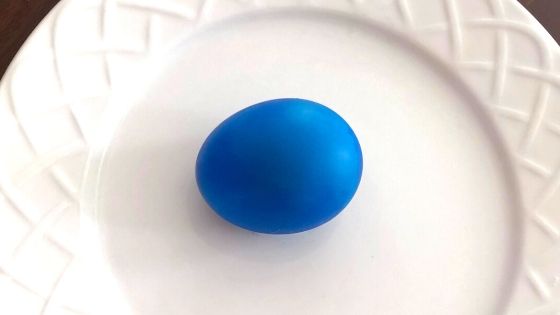
The kids took turns bouncing the naked egg. After a few dozen bounces, you can see that small holes started to form in the membrane that held the guts of the egg together. So when we tried to drop the egg from a higher distance, it popped!
You can see that the egg yolk had turned blue. However, the egg yolk remained yellow because the protein content of the yolk prevented the absorption of the blue color.
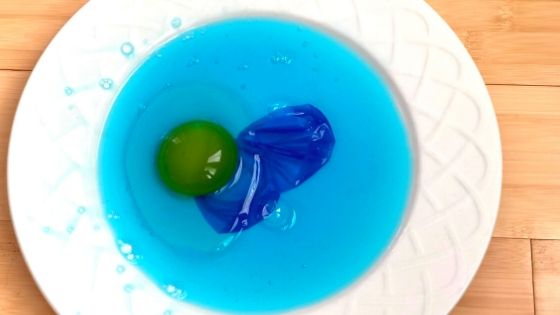
Bouncy Egg Experiment Explanation
The eggshell is made of calcium carbonate. When you submerge the egg in vinegar, the acid in the vinegar reacts with the calcium carbonate and produces carbon dioxide. This chemical reaction is what causes the little bubbles you see surrounding the egg.
As the shell dissolves, the thin membrane of the egg is left behind. The membrane is semi-permeable, which means the vinegar can pass through it. The egg absorbs the vinegar, and that’s why you see the egg increase in size as it continues to sit in the vinegar.
Final Thoughts on the Naked Egg Experiment
What came first, the chicken or the egg? While the world may never know the answer to this age-old question, we at least now know what the inside of an egg looks like thanks for this bouncy egg experiment.
For more awesome science experiments, check out:


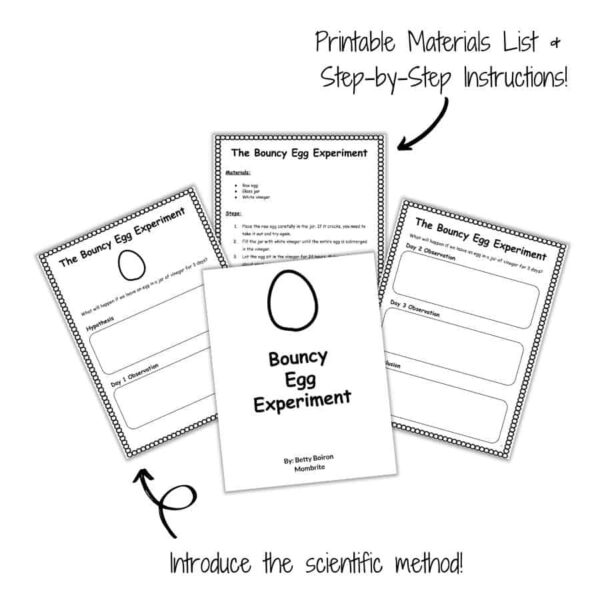
good experiment
Thank you! 🙂
Hi, Betty!
Thank you for this great post! I ran into one issue, however. When I clicked the button in the email I received to confirm my email address, it took me to a “Toilet Paper Roll Minion Template” instead of Bouncy Egg Experiment printables. Those printables look great! May I please get that link?
Thank you!
-Michelle
Hi Michelle, I just emailed my list about this. Thanks for bringing it to my attention! Let me know if you didn’t receive the printable, I will email you separately.
Thank you so much i tried this with my students.
Love Tracy
I am glad you liked it!
What if the egg is left for more than 2 days?
It will be fine! We left ours up to 5 days before just to test it out. I think if you continue leaving it after that the vinegar will start eating more into the egg itself, but it’s a fun experiment to try (though gross)!
Bouncy egg experiment
Observation?
Question/Problem?
Inferences?
Hypothesis?
Proposed experiment?
Predicted result?
Please help me I had my experiment I want to know if my answer is similar to your answer I am a grade 5 student.
ASAP! thank you!
Hello! Haha well most of these are really dependent on your own experiment. If you used food coloring in the vinegar, for example, we would have different observations and even hypotheses. The predicted result would be your own prediction, I can’t really answer that for you. In the end you should hopefully have a bouncy egg!